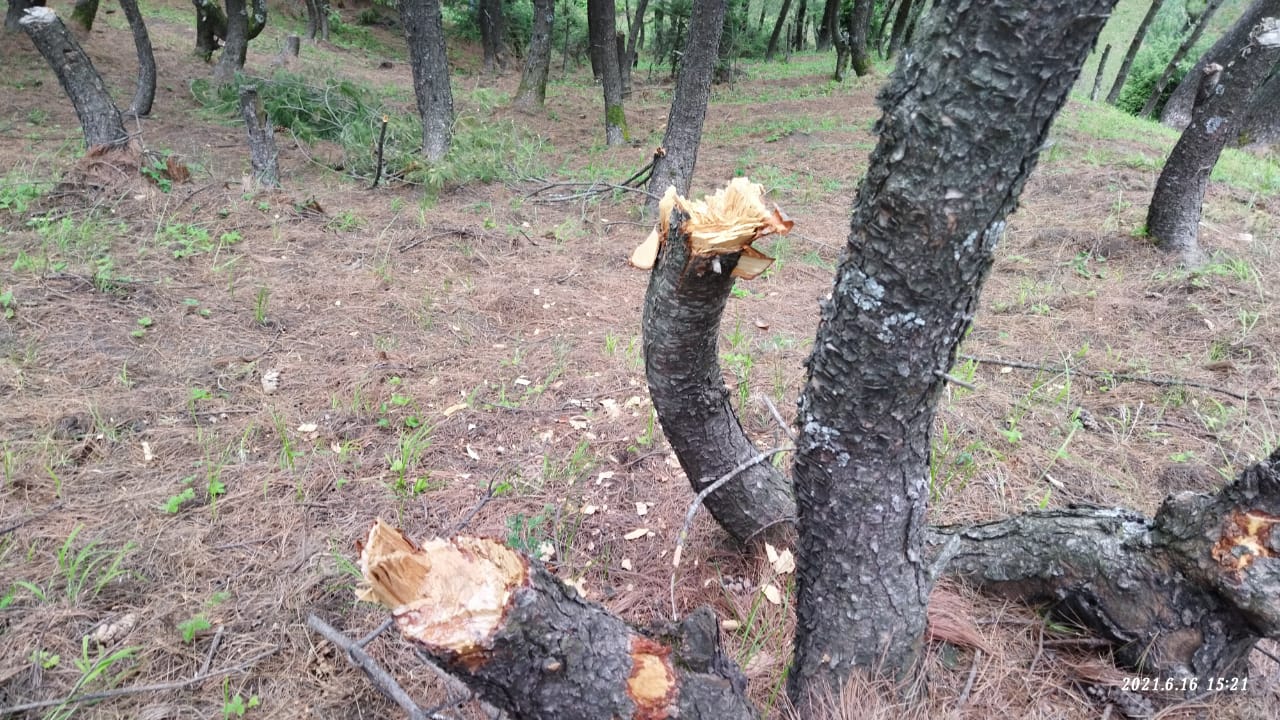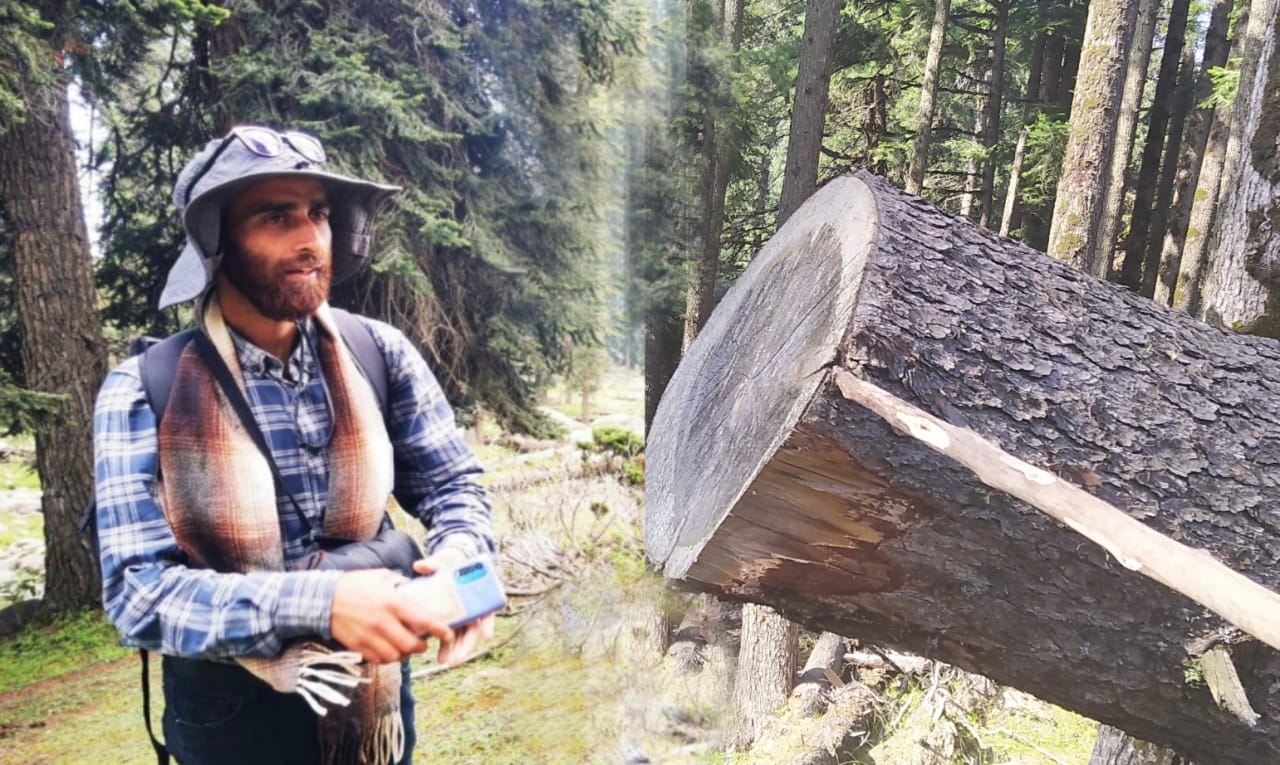Before interpreting Kashmir’s blistering situation, life changed for Mushtaq Lone when a bunch of unnerved nomads visited him in one summer day of 2021.
The ‘rumble in jungle’, as many called it, had made the visitors anxious about their future. They conveyed their fears while staring at the lurking homelessness in that post-abrogation era when New Delhi was bent on clearing ‘encroachments’ from Kashmir forests.
The eviction notices served in this regard had disconcerted the gypsies semiannually shuttling between Jammu and Kashmir with their livestock.
That day, Lone, a native of Central Kashmir’s Chadoora area, went to help the indigenous people over their rights under the Forest Right Act.
But what the activist observed changed the course of his activism forever.
“Ever since I plunged into social activism in 2012, I had never scanned the deep jungles of Kashmir,” Lone, 32, recalls. “But when I finally got a chance to do it, I was shocked to see massive deforestation across the Pirpanchal range.”
Following that forest trip, Lone began recording the status of woods with a religious routine. He would trek to upper reaches as an eco-activist and collect information on green gold. “Massive forest cover, as I observed it, was plundered at Yusmarg, Liddarmud, Frasnag, Tosamaidan, Pulwama and Shopian areas,” the activist says.
Earlier, The Himalayan Post Reported that Satellite Images Show Dense Forest Deforestation
After gathering data on deforestation, Lone started an online campaign to aware people about the bleeding jungle situation. In the last two decades, he revealed, Kashmir’s forest area has come down from 80 per cent to 40 per cent.

Some months later, Lone’s vocal eco-campaign was finally noticed by administration. “That official acknowledgement was the first step towards any counter mechanism,” Lone, who visits remote places twice a week to gather information, says. “But with acknowledgement comes community awareness. This is where we need to work on.”
Massive deforestation, he believes, has already created an extreme weather situation in the region called ‘Paradise on Earth’.
“Deficit rainfall has taken a huge toll on our environment,” he says. “Also, untimely snowfall in Kashmir, where almost 80 per cent of India’s apples are grown, has seen the region’s farmers lose half their crops in the third year of disastrous harvests.”
The unabated axing of forest cover has also accumulated greenhouse gases like carbon dioxide in the atmosphere and accelerated global warming.
“The current warming pattern is a fatal sign for this Himalayan region because our ecosystem is girded with glaciers, mountains, rivers and lakes,” the eco-activist warns.
Apart from soaring mercury, Lone says, massive deforestation has increased the human-animal conflict.
“When forest cover shrinks,” he explains, “animal come down for food and escalate the conflict. Administration must plant wild berry trees in forests, as it’s the basic food for wild animals like Himalayan black and brown bear.”
This other conflict of Kashmir has reportedly left 200 people dead and 2,000 wounded since 2011.
“Some order can be restored with the massive plantation of deodar trees in Kashmir forests,” Lone says. “But as long as some officials are hand in glove with the timber smugglers, such initiatives won’t see the light of the day.”
However, with some official help lately, the eco-activist was able to file FIRs against many smugglers and restore some order in Budgam forest.

“But since this deforestation is a pan-Kashmir issue, it needs a bigger awareness and action plan,” he says. “Meadows in the upper reaches of Kashmir need our immediate attention. Yusmarg area has already lost 70 per cent forest cover, while Tosamaiden has lost almost 99 per cent.”
Timber smuggling, he says, is still prevalent in south and central Kashmir. “The Sangarwani area of Pulwama has become so shallow that now timber smugglers from that area have turned to Yusmarg area.”
This menace can be curbed if government auctions vast timber rotting in Kashmir forests for public use, he says. “Such a step can check smuggling nexus and boost state’s economy.”
Kashmir’s fading forest cover needs an emergency response, says Lone while recalling that visit from nomads setting stage for his eco-activism.
“I’ve seen glaciers melting in the region since 2019,” he turns tense and thoughtful. “Apart from my own field trips, the climatic data of the past 30 years clearly indicate warming patterns and increased humidity in Kashmir today.”